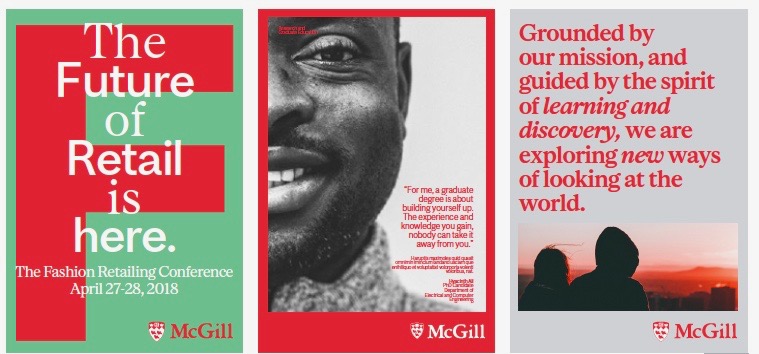
Whether you’re producing a newsletter for your unit, creating a social media avatar, printing new stationery, branding a McGill vehicle, or maintaining a department webpage, visual consistency is the key to effective communication.
McGill has a set of logos, typefaces, and colours that work together to help people immediately identify the McGill “brand”—and reinforce the University’s identity as one of the world’s top teaching and learning institutions. To give McGill communicators clear and concise advice about how to apply these elements across all their communications, the Office of Communications and External Relations (CER) has developed a new Visual Identity Guide. The guide is a practical handbook to help you create professional-looking communications that reinforce the University’s identity, enhance its visibility, and serves as a unifying force for members of our diverse community.
You can consult the Visual Identity Guide webpage, or download a PDF. The guide includes download links for McGill’s brand assets, such as logos, templates and the new McGill fonts.
CER is also overseeing and supporting the new “Made by McGill” creative platform, which launched last month. Although Made by McGill is consistent with the standards specified in the Visual Identity Guide, it is reserved for central marketing, Bicentennial projects, University Advancement initiatives and specific projects headed by McGill units. Units wishing to use the Made by McGill platform must do so under CER oversight, in order to ensure that the platform maintains its integrity and continues to perform well into the future.
For more details about the creative platform, and the standards set out in the Visual Identity Guide, watch the following video, or contact the Office of Communications and External Relations.
